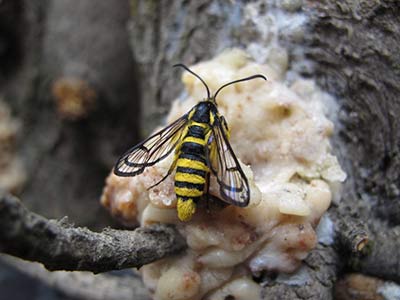IPM
The University of Utah’s integrated Pest Management program has a mission to develop and promote ecologically friendly and sustainable methods of pest control. Through application of the appropriate cultural and biological practices we focus on what this means for our campus. We emphasize continual education to stay on the forefront of horticultural practices.
Eco-friendly IPM Standards

The IPM team uses a variety of practices and controls in order to minimize environmental damage and health risks and increase continual education of horticultural practices.
Cultural Practices
If you become familiar with these methods you will be preventing the need for controls and enabling healthy practices across the whole landscape. Cultural practices for turf that you will engage in include: adjusting mow height according to the time of the year to promote root growth and stress tolerant turf; fertilizing turf to enrich deficient soil; seeding and over seeding to fix winter damage and aerating turf to relieve soil compaction, break down thatch and stimulate decomposition. Proper sanitation of turf areas and equipment is essential to prevent unwanted pests and diseases from harboring, promoting or spreading. Healthy turf will out-compete most weeds and prevent disease. Practices for shrubs and trees include: proper pruning techniques and timing to maintain health, bloom and environment; widening tree wells and shrub beds to reduce soil compaction and to promote root growth; fertilizing deficient soils and removing and rejuvenating mulch to reduce organic matter that harbors insects and diseases; controlling the spread of disease by methodically sanitizing tools after you have used them on a diseased plant.
These practices must also include ensuring proper irrigation, to promote root growth and to reduce insect pressure and susceptibility to disease. As well as placing pheromone traps to catch and disrupt breeding of pests.


Mechanical Controls
These can be used when cultural practices have not eliminated persistent weeds. You can do this by hand pulling weeds or using simple horticulture tools such as a garden hoe or weed puller. If possible for insects, you can remove by hand as needed.
Biological Controls
Controls include using natural enemies, predators such as ladybugs and pathogens to regulate or eliminate a specific pest population. Maintaining a diverse plant environment and avoiding monocultures helps prevent unwanted pests and disease. It differs from chemical, cultural, and mechanical controls as it alone is not a means by which to achieve pest eradication because the biocontrol agent requires maintenance of its food supply in order to survive. Biological controls can be easily disrupted by other pest management tactics, especially broad spectrum pesticides.


Chemical Controls
You will only use these methods as a last resort to remedy a pest or disease. Careful selection and use can help eliminate weeds and reduce or kill pest populations. Pre and post emergent herbicides can be used in conjunction with cultural and mechanical practices for weed control in turf. Pre-emergent chemicals are applied before weeds develop and post-emergent chemicals are applied after the weed has started to grow. Post-emergent chemicals are most effective on young actively growing weeds. Insects and disease can be targeted with chemicals labeled for specific applications. You will target a variety of insects from tree borers to root weevils. Proper diagnosis is key because most plant health problems are not caused by biotic factors like insects and disease but rather from abiotic factors like irrigation, environment, culture and care. It is key to identify your windows of opportunity to target the pest or disease when it is most susceptible to elimination.
The University of Utah has a response plan, provided by Environmental Health and Safety, in case of a hazardous material emergency. You will be working in close proximity with material that can be hazardous so you will be trained on and familiarized with the procedure established by EHS. An action checklist is available for review on the EHS website: ehs.utah.edu.
